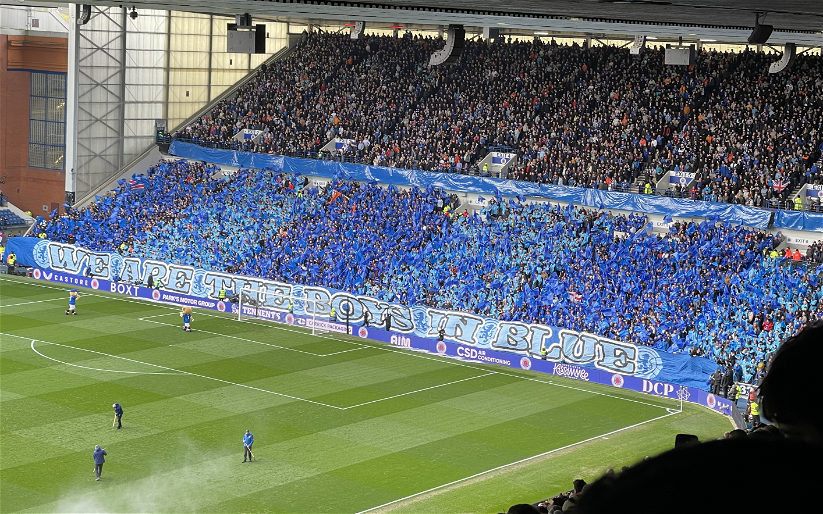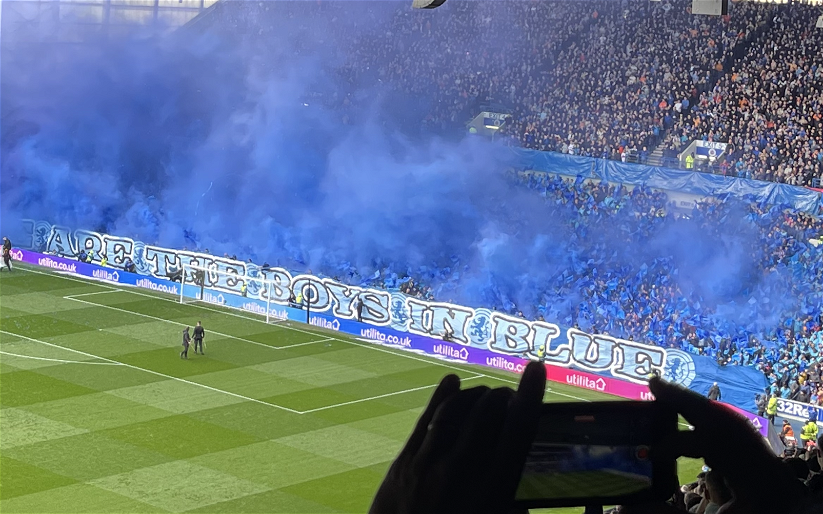A Review of Ian Hogg’s Our Rangers Heroes, incredible stories of forgotten Rangers heroes from across the ages.
The idea behind this book is both refreshing and (at least up to a point) commercially crazy. After all, if you host a series on the Heart and Hand Podcast Network where you ask sometimes sober subscribers for their favourite players with the aim of producing a snapshot of the ‘Fifty Greatest Rangers’, people are entitled to ask questions when you then write a book which doesn’t deal with any of them.
Thankfully, not only for Ian Hogg but also the reader, what has instead been produced is likely to be much more interesting, and hopefully rewards that risk.
For instead of another journey through the most popular – or even a diversion through some of the genuine greats who inexplicably didn’t make that top fifty – we are treated to a collection of stories attempting to bring into the light some of the author’s favourites from across the one hundred and fifty plus years of the Rangers story. Hogg can be forgiven for including a few from the past forty odd years of his own time as a supporter, but should especially be thanked for a number of the others: not only do some titanic figures in the history of the club get the credit and exposure they deserve but some very minor men (at least in the time spent at Ibrox) are shown to have quite far-reaching impact on the wider footballing world and – in a couple of cases – quite profound influence on the world-at-large.
Take, for example, the first chapter, where we are introduced to a man named James McCrae. McCrae played only three times for Rangers but would later go on to manage Egypt at the 1934 World Cup – becoming the first Ranger to be involved at the tournament – and would seek to introduce a couple of members of that squad to the Ibrox club. Some of you may have heard of Mohamed Latif, who made a couple of appearances in the jersey but struggled with the culture shock that was 1930s Scotland, becoming rather more famous for his administrative and then commentary work in his native Egypt. The other chap, Mustafa Kamel Mansour, studied in Scotland but turned down an offer of a five thousand pound signing-on fee from Rangers, having pledged to play for Queen’s Park and retaining the courage of his convictions to remain an amateur. Mansour would later rise to the rank of a cabinet minister.
Our first Danish signing, a stylish player and hugely principled man, trumps that by virtue of his status as a resistance war hero in his native land, and this look at Carl Vilhelm ‘Skoma’r’ Hansen is among Hogg’s best chapters. The idea of a young amateur who spoke no English taking up the offer of a professional contract in another country is always steeped in romanticism but Hansen’s early experiences in Scotland did not reflect well upon certain members of the Scottish footballing fraternity; the irony of a man who would later be tortured at the hands of the Nazis being singled out by opposition fans for being a foreigner, and perhaps a foreigner from a place a little too close to Germany, is not lost. But what can you expect from a trip to Airdrie?
Travelling further in the Nordic countries brings us to Albert Guðmundsson, a trailblazer if ever there was one. Iceland’s first professional footballer and a man who played for Rangers, Arsenal, and AC Milan: enough for one life, you might think. Guðmundsson was quite the man, however, and in later life his rise from wholesaler through diplomat and then football administrator to politician and party chairman was as incident-filled as any sporting career. His greatest achievement was in pioneering a move towards professionalism and travelling abroad that he later helped consolidate while at the Icelandic Football Federation, all beautifully realised in the fact that so many members of his family took his example to heart and flourished in football and public service.
I should note at this point that more parochial readers need not be put off by the idea of a constant stream of peripheral figures or men they couldn’t recognize if you gave them a picture and turned their full given name into an almost complete Wheel of Fortune style puzzle. The chapters on Dado Pršo (quite correctly bordering on man love) and Basile Boli (what should have been) will bring you back to the recent past, and neatly demonstrate the very different paths to professional football and to Ibrox that are available. And the glorious tales from the incorrigible Barcelona Bear that is Willie Johnston give not only a fair hearing for a man whose angels were too often overshadowed by his demons but also a timely reminder of how appalling and small-minded the governance of our national sport has always been.
In a book as detailed as this there are bound to be some issues; as with every person who has clearly spent a long time studying their topic there is a tendency to resist the urge to cut some of that detail, resulting in occasional passages reading a little like a (good) Wikipedia entry, and it can be hard at times to balance the central importance of the player selected when compared with the events unfolding at the club or in wider society – Stuart Munro, for instance, often gets lost in his own chapter, a fault that makes the case once more for the unsung nature of the full back!
But there are some selections that clearly outweigh any concerns and, indeed, make the case for future and further research – whether that is on the part of the reader or possibly Ian or another author. Interspersed throughout are mentions of various tours made by the club, to North America and Northern Europe. To say that they were uneventful, either on or off the field, would be quite the fib, but I don’t intend to spoil the stories here. Although I appreciate that some of this ground has previously been covered by, among others, Robert McElroy in the Rangers historian, I would welcome a collected, definitive look at this fascinating aspect of our history. Likewise, there is surely room for a wider look at more of the men who played for Rangers and then went on to manage elsewhere in the footballing world. There have been a number of very good books published in recent years on the way British managers took the game and helped it develop and grow across the world, and this sort of work seems a ripe area for further study.
Throughout we are given glimpses of how football and society changed for the better or worse, and much of the material will offer a fascinating impression of how very odd indeed (and often not really ‘new’) are the things we now take for granted. For instance, I was both fascinated and then genuinely shocked by the amateur approach of top flight football in Scandinavia and how that remained in some parts until relatively recently – the insight into the not-quite professional status of a team that reached the European Cup final as recently as Robert Prytz’s Malmö FF side of 1979 would melt the minds of the kids. And it’s nice to note that the dysfunctional and often idiosyncratic nature of manager acquisition so common in today’s game has nothing on the habits from the past; if anyone can read the chapter on the two Rangers men who went on to manage Juventus (Billy Aitken and Billy Chalmers) without wondering if it was all a chemically-enhanced dream then your brain works better than mine. Note, too, the influence of player power when new ideas and pioneers are brought into a closed (mind) system; Aitken’s methods would, like those of so many similar men, be properly appreciated only in later years. Chalmers’ appointment itself is one of the most mystifying moments in this or any other football book and I defy anyone to read this section and not want to know much more about this extended period in Italian football and society.
Relating the life and potential of Walter Tull is a tough task but admirably handled, and in a less tragic but still cruel fashion it is sobering to note how many years were taken away from certain of these men as their peaks coincided with rather more serious gatherings of young men. The chapter on Dougie Gray, a legend in every sense, makes the point quite forcefully and firmly that for much of the Second World War the footballing situation in Scotland was as close to normal as could realistically be expected, and we do a disservice to those who played in those years to discount their achievements; certainly it is the case that the players, clubs, and the media tasked to report on those seasons did not see them as some form of secondary event. Indeed, the passion and fire that punctuated some of the Old Firm derbies of the day was a match – both in terms of the commitment and the customary lack of discipline – for that of any era and this is powerfully brought home by Hogg’s considered line of argument.
The impact of both world wars on the playing careers and then the lives of many of these men is a sombre reminder of how lucky we are to live in this era and yet, as Ian considers the achievements of our favourite Ukrainian – ‘Miko’ – in a chapter that taps into the issue of doping, drugs, and state approaches to sport as propaganda, we have to face the fact that life still has a habit of getting in the way. The effects of war and the attempts to make life return to normal are magnificently captured in the story of Jimmy Caskie, whose arrival at Rangers in 1945 neatly coincided with one of the most significant moments of the immediate post-war: the arrival in the United Kingdom of the Soviet side Dynamo Moscow. Their diplomatic trip was a thrill-a-minute – taking in ringers, twelve men on the field, a fascinating style of play, and Daffy Duck cartoons – but a disagreeable consequence of Arsenal’s ‘wide-ranging’ selection process for their game against the men from Moscow lead to Caskie having to sit out the game at Ibrox rather than run the risk of the allies storming off in a huff with accusations of a lack of integrity ringing in the ears of the hosts.
Another subject, the Dublin Protestant Alex Stevenson, one of many to make their way from Rangers to the blue half of Merseyside, suffered greatly as a result not only of the Second World War but via what would later be revealed as one of the biggest administrative scandals of the age. Alex scored a winner in an Old firm game but was unable to make a great impression at Ibrox; his spell in Glasgow overlapping with a number of men – Messrs Archibald, English, Marshall, McPhail, Smith and Fleming – who between them scored 128 goals across all competitions in the season where Stevenson arrived. Thus it was mostly at Everton where he was allowed to show his class. To reward him the Goodison board blocked his call-ups by the southern Football Association of Ireland (leading to a gap of fourteen years between caps for the FAI) without ever explaining that such a move had been made or even requested. The resultant whispers and accusations of bigotry (on both sides) were shamefully allowed to fester until the end of Stevenson’s life. A man who had represented both associations serving the island of Ireland was treated disgracefully by men in boardrooms and one cannot escape the tangible and lasting effect this had on the life of a man who had given his all for club and countries. Not all of these accounts have a happy ending.
Ian Hogg is entirely to be commended for his approach to these tales; only occasionally do we touch on areas covered with great regularity or individuals about whom it can be difficult to find anything new or interesting to offer. This is a consistently interesting collection of stories and aptly illustrates the incredible variety of men who have made Ibrox their sporting home, even if only briefly. It is absolutely bubbling over with enthusiasm for the topic (s) but resists the urge to slip into hagiography; most notably in the chapter on the sliding doors moment of 1967 post-Berwick – but also when it comes to the 1990s tactical approach – legendary Rangers managers are (quite correctly) made to look very bad indeed. And – lest you all think this is a little too serious – the preposterous words and ludicrous actions of the blessed Davie Hay make a welcome appearance in what is now an ongoing H&H tradition.
The author’s stated aim was to add to the attempts to best remember and record the wide variety of people and stories that help make this club such an institution and the fidelity to that approach best expresses the chief strength of this book: the interest in so many of the figures depicted is clearly sourced from an understanding of why the contrasts, and the ups and downs, in their lives make them such deserving people to be discussed. It is to be hoped that readers will take as much enjoyment from reading this book as the writer clearly did in researching it and perhaps we may all benefit from a follow, follow-up.
You can contact the author on Twitter https://twitter.com/RangersHeroes
The book is published by Pitch Publishing and available direct from H&H or wherever you can buy books.
https://heartandhand.co.uk/our-rangers-heroes/



